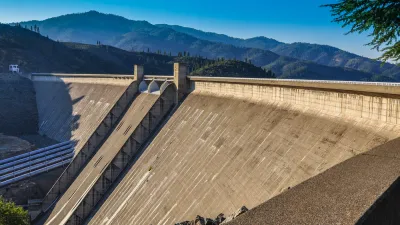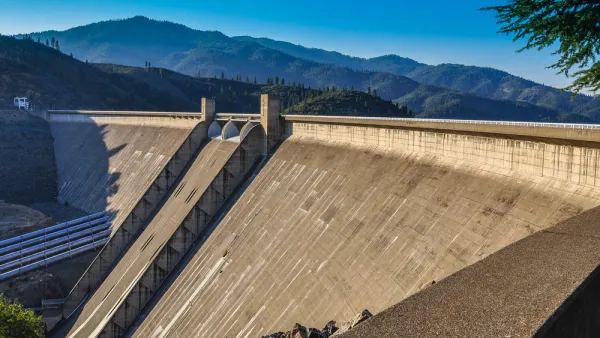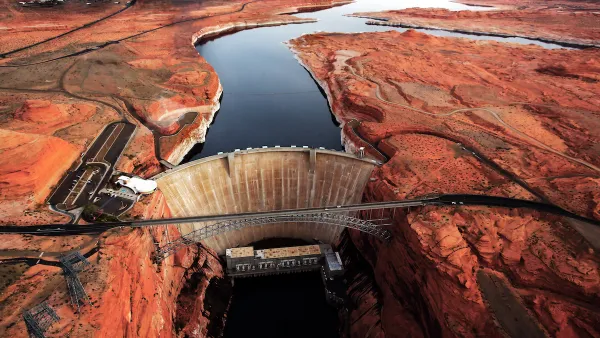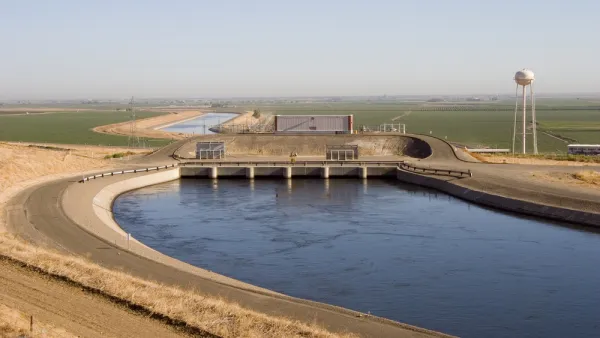Despite state opposition and potential violations of California law, the Trump Administration has revived a project that was deemed impracticable only a few years ago.

The Los Angeles Times reports that the federal government is pushing a plan to raise the Shasta Dam despite the fact California not only opposes the project, state law prohibits it.
"But in these times of unprecedented tension between Washington and California, the state's objection to this $1.3-billion project near the Sacramento River is hardly proving a deterrent. The Trump administration is pursuing the project with gusto, even as it seeks to make deep cuts in popular conservation programs aimed at California's water shortages."
The Shasta Dam was originally supposed to be much higher, and idea of raising it has been around awhile. But only three years ago the U.S. Fish & Wildlife Service declined to support the project due to concerns about the Endangered Species Act, which was just before the Bureau of Reclamation—the same agency that is now pushing the project—issued a report with concerns over both costs and violations of state law.
There's also the question of who would benefit from the heightening of the dam, and who's in charge of making it happen.
"The project promises a big payoff for water interests with close ties to the administration. A former lobbyist [David Bernhardt] for one of the biggest of those interests, the politically connected Westlands Water District, holds a key administration post with power over the flow of federal money."
Even before the Shasta Dam issue, Bernhardt's appointment to the Department of the Interior raised—and has continued to raise—concerns about conflicts of interest over his connections to the largest supplier of agricultural water in the United States.
"Whether the Trump administration would ultimately be able to pour concrete without buy-in from Sacramento remains to be seen. The Wild and Scenic Rivers Act could prevent California from issuing any of the permits required for building. Water experts interviewed said they could think of no time in recent history that the federal government moved forward with such a mammoth public works project inside California's borders without the state's blessing."
FULL STORY: California doesn't want this towering water project. Trump administration may build it anyway

National Parks Layoffs Will Cause Communities to Lose Billions
Thousands of essential park workers were laid off this week, just before the busy spring break season.

Retro-silient?: America’s First “Eco-burb,” The Woodlands Turns 50
A master-planned community north of Houston offers lessons on green infrastructure and resilient design, but falls short of its founder’s lofty affordability and walkability goals.

Delivering for America Plan Will Downgrade Mail Service in at Least 49.5 Percent of Zip Codes
Republican and Democrat lawmakers criticize the plan for its disproportionate negative impact on rural communities.

Test News Post 1
This is a summary

Test News Headline 46
Test for the image on the front page.

Balancing Bombs and Butterflies: How the National Guard Protects a Rare Species
The National Guard at Fort Indiantown Gap uses GIS technology and land management strategies to balance military training with conservation efforts, ensuring the survival of the rare eastern regal fritillary butterfly.
Urban Design for Planners 1: Software Tools
This six-course series explores essential urban design concepts using open source software and equips planners with the tools they need to participate fully in the urban design process.
Planning for Universal Design
Learn the tools for implementing Universal Design in planning regulations.
EMC Planning Group, Inc.
Planetizen
Planetizen
Mpact (formerly Rail~Volution)
Great Falls Development Authority, Inc.
HUDs Office of Policy Development and Research
NYU Wagner Graduate School of Public Service





























